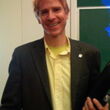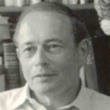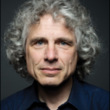Phi: a voyage from the brain to the soul
Description
This title is printed in full color throughout.From one of the most original and influential neuroscientists at work today, here is an exploration of consciousness unlike any other—as told by Galileo, who opened the way for the objectivity of science and is now intent on making subjective experience a part of science as well. Galileo’s journey has three parts, each with a different guide. In the first, accompanied by a scientist who resembles Francis Crick, he learns why certain parts of the brain are important and not others, and why consciousness fades with sleep. In the second part, when his companion seems to be named Alturi (Galileo is hard of hearing; his companion’s name is actually Alan Turing), he sees how the facts assembled in the first part can be unified and understood through a scientific theory—a theory that links consciousness to the notion of integrated information (also known as phi). In the third part, accompanied by a bearded man who can only be Charles Darwin, he meditates on how consciousness is an evolving, developing, ever-deepening awareness of ourselves in history and culture—that it is everything we have and everything we are. Not since Gödel, Escher, Bach has there been a book that interweaves science, art, and the imagination with such originality. This beautiful and arresting narrative will transform the way we think of ourselves and the world.
More Details
030790721
Also in this Series
Published Reviews
Publisher's Weekly Review
Both playful and philosophical, this extravagant book addresses questions about the root of consciousness in a unique way to illustrate Tononi's innovative view of consciousness in terms of information theory, the brain as an integrated network of signals. Professor of neuroscience at the University of Wisconsin, Tononi takes an aging Galileo-and the reader-on a complex intellectual journey in three parts, each led by a prominent scientist. Francis Crick, co-discoverer of the structure of DNA, shows Galileo how various portions of the human brain function, both separately and together. Alan Turing, a founder of the science of artificial intelligence, helps Galileo understand how to link these facts into "a scientific theory of consciousness." Galileo's third guide is Charles Darwin, who explores how consciousness is evolving. Tononi provides notes at the end of each chapter that expand on the themes raised, and in a voice separate from that of the text's narrator; for example, the book ends with an arcane symbol, and the note comments that this symbol "must hold some great significance to the author but could not be deciphered." The book is a visual delight as well as an impressive read, its lavish artwork and literary references demonstrating just how fully complementary art and science can be. (Aug) (c) Copyright PWxyz, LLC. All rights reserved.
Library Journal Review
Tononi (psychiatry; Univ. of Wisconsin; coauthor, with Gerald Edelman, A Universe of Consciousness: How Matter Becomes Imagination) here explores the concept of consciousness, using allegories for the isolated and integrated functions of each brain region. The narrative imagines Galileo on his deathbed, experiencing revelations about the nature of consciousness as he interacts with scientists including Francis Crick, Alan Turing, and Charles Darwin. Some scenes-such as the "Tale of Two Cities" fable, which contrasts the functions of the cerebral cortex and the cerebellum-effectively illustrate the integrated ("phi") nature of consciousness. Tononi offers a distinct means of framing consciousness that emphasizes holistic unity; other books, such asDaniel C. Dennett's Consciousness Explained present competing theories. This book will be of interest to those looking for a philosophical exploration of consciousness grounded in science. VERDICT To more literal-minded thinkers, this book may be a bit too abstract and complex in its examination of neuroscientific concepts. However, it will take on a unique journey those looking for a balanced blend of the literary, philosophical, and scientific.-Ryan Nayler, Univ. of Toronto Lib. (c) Copyright 2012. Library Journals LLC, a wholly owned subsidiary of Media Source, Inc. No redistribution permitted.
Library Journal Reviews
Tononi (psychiatry; Univ. of Wisconsin; coauthor, with Gerald Edelman, A Universe of Consciousness: How Matter Becomes Imagination) here explores the concept of consciousness, using allegories for the isolated and integrated functions of each brain region. The narrative imagines Galileo on his deathbed, experiencing revelations about the nature of consciousness as he interacts with scientists including Francis Crick, Alan Turing, and Charles Darwin. Some scenes—such as the "Tale of Two Cities" fable, which contrasts the functions of the cerebral cortex and the cerebellum—effectively illustrate the integrated ("phi") nature of consciousness. Tononi offers a distinct means of framing consciousness that emphasizes holistic unity; other books, such asDaniel C. Dennett's Consciousness Explained present competing theories. This book will be of interest to those looking for a philosophical exploration of consciousness grounded in science. VERDICT To more literal-minded thinkers, this book may be a bit too abstract and complex in its examination of neuroscientific concepts. However, it will take on a unique journey those looking for a balanced blend of the literary, philosophical, and scientific.—Ryan Nayler, Univ. of Toronto Lib.
[Page 110]. (c) Copyright 2012. Library Journals LLC, a wholly owned subsidiary of Media Source, Inc. No redistribution permitted.Publishers Weekly Reviews
Both playful and philosophical, this extravagant book addresses questions about the root of consciousness in a unique way to illustrate Tononi's innovative view of consciousness in terms of information theory, the brain as an integrated network of signals. Professor of neuroscience at the University of Wisconsin, Tononi takes an aging Galileo—and the reader—on a complex intellectual journey in three parts, each led by a prominent scientist. Francis Crick, co-discoverer of the structure of DNA, shows Galileo how various portions of the human brain function, both separately and together. Alan Turing, a founder of the science of artificial intelligence, helps Galileo understand how to link these facts into "a scientific theory of consciousness." Galileo's third guide is Charles Darwin, who explores how consciousness is evolving. Tononi provides notes at the end of each chapter that expand on the themes raised, and in a voice separate from that of the text's narrator; for example, the book ends with an arcane symbol, and the note comments that this symbol "must hold some great significance to the author but could not be deciphered." The book is a visual delight as well as an impressive read, its lavish artwork and literary references demonstrating just how fully complementary art and science can be. (Aug)
[Page ]. Copyright 2012 PWxyz LLC

































